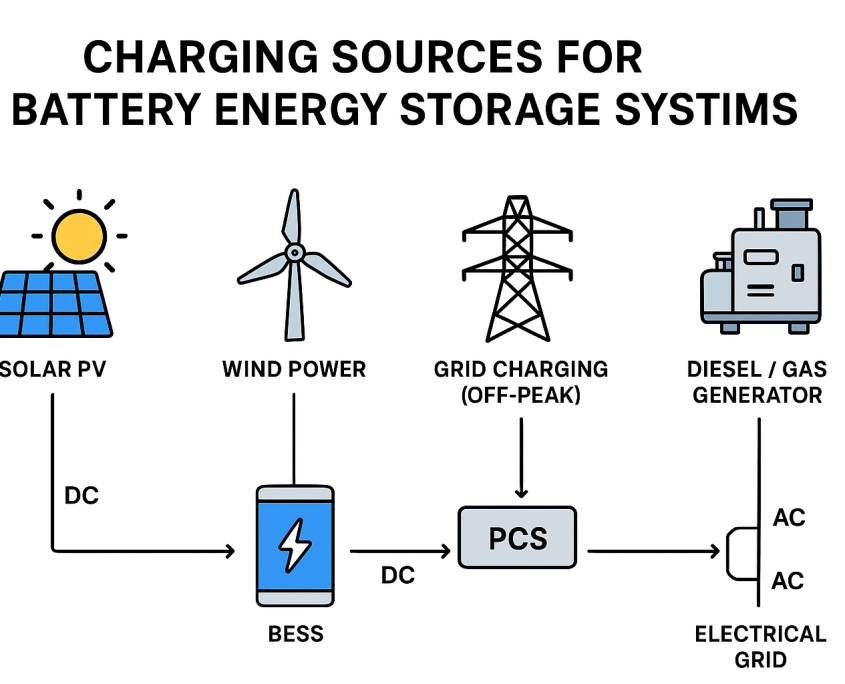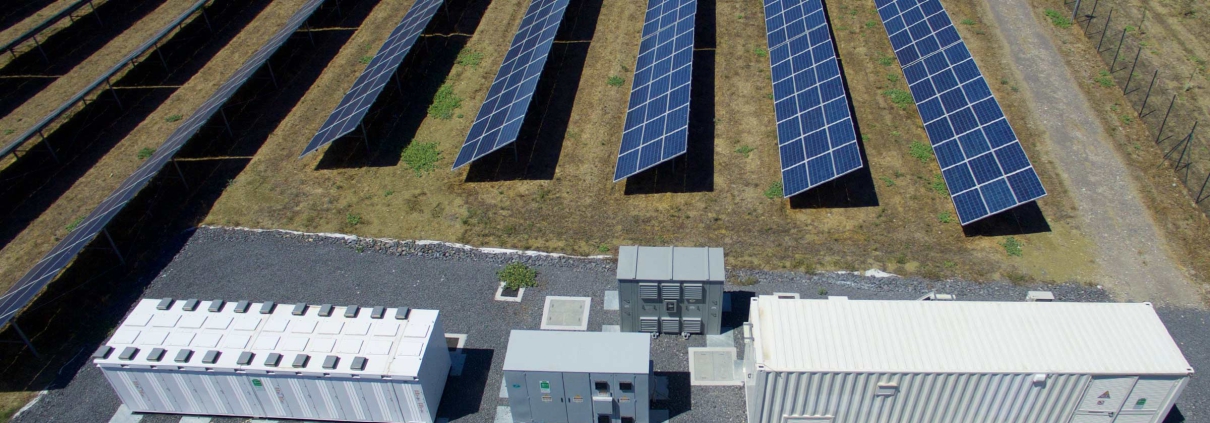How Does a Battery Energy Storage System Work? A Complete Guide
Quick Answer
A battery energy storage system (BESS) stores electricity in rechargeable batteries when supply exceeds demand or during off-peak hours, and releases it when demand rises. It relies on a Battery Management System (BMS) to control charging, discharging, and safety, a Power Conversion System (PCS) to handle DC–AC conversion, and thermal management to maintain efficiency and protect the batteries.
What Is a Battery Energy Storage System (BESS)?
A BESS is a technology that captures electrical energy, stores it as chemical energy, and releases it when needed. It can be deployed at utility scale, commercial and industrial facilities, microgrids, or residential setups.
In today’s energy landscape—shaped by the growth of renewable energy, fluctuating grid demand, and the need for backup power—BESS plays a crucial role in making electricity supply more flexible, reliable, and sustainable.
How a BESS Works – Enhanced Technical Principles
- Charging Phase
- Energy Flow: Electricity from solar PV, wind, the grid, or generators is converted into DC power (if not already DC) and stored in the batteries as chemical energy.
- Battery Chemistry:
- Lithium-ion: Lithium ions move between the anode and cathode.
- LFP (Lithium Iron Phosphate): Offers higher safety and longer cycle life, suitable for large-scale storage.
- Energy Losses: Include conversion losses in PCS, internal resistance heat, and minor BMS power consumption.

How Does a Battery Energy Storage System Work
- Storage Phase
- Batteries hold energy in chemical form.
- BMS Role: Continuously monitors voltage, temperature, state of charge (SOC), and state of health (SOH) to ensure safety and optimize lifespan.
- Discharging Phase
- Stored DC power flows through the PCS, which converts it to AC if needed.
- Power is supplied to loads or fed back into the grid according to the EMS scheduling.
- Control and Protection Systems
- Battery Management System (BMS):
- Cell balancing to prevent overcharge or over-discharge
- Temperature monitoring and active heating/cooling
- SOC/SOH calculations
- Energy Management System (EMS):
- Optimizes charge/discharge scheduling (peak shaving, renewable-first, backup mode)
- Communicates with the grid for frequency regulation, voltage support, and other ancillary services
- Safety Mechanisms:
- Thermal runaway detection and mitigation
- Gas/smoke sensors for early fault detection
- Fire suppression systems (inert gas or liquid cooling)
Charging Sources for a BESS
BESS can be charged from multiple energy sources, providing operational flexibility:
- Solar Photovoltaics (PV)
- Stores excess daytime solar generation
- Supports off-grid or self-consumption setups
- Zero fuel cost and emissions
- Wind Power
- Captures surplus wind energy
- Smooths output fluctuations for stable grid integration
- Grid Charging (Off-Peak Hours)
- Charges from the grid when electricity prices are low
- Discharges during peak hours for cost savings and peak shaving
- Diesel or Gas Generators
- Backup charging in remote or off-grid environments
- Higher operating costs and emissions, usually secondary source
Typical Deployment Scenarios – Scene-Based Approach
To help new readers understand BESS applications, here are common deployment scenarios and suitable system types:
Scenario 1: Industrial Park Peak Shaving
- Need: Reduce peak electricity costs and stabilize load.
- BESS Type: LFP batteries for safety and long cycle life
- Capacity: 2–4 hours duration, e.g., 10 MW / 20–40 MWh
- Operation:
- Daytime: Solar PV supplies load first; excess charges BESS
- Evening peak: BESS discharges to reduce grid draw
- Benefit: Lower demand charges and higher self-consumption
Scenario 2: Wind Farm Output Smoothing
- Need: Mitigate rapid wind power fluctuations to meet grid requirements
- BESS Type: Lithium-ion or flow batteries (flow better for long-duration smoothing)
- Capacity: 1–2 hours, matched to wind capacity
- Operation:
- High wind: store excess power
- Low wind: discharge to maintain stable output
- Benefit: Improved grid compliance and renewable integration
Scenario 3: Hospital Backup Power
- Need: Continuous power for critical medical equipment
- BESS Type: LFP or sodium-ion for high safety and stability
- Capacity: Covers diesel generator startup time (5–30 minutes) and short-term full load
- Operation:
- Normal: peak shaving or energy management
- Outage: BESS instantly supplies power, diesel generator follows
- Benefit: Zero-interruption power to critical loads
Scenario 4: Off-Grid / Microgrid
- Need: Stable power in islands or remote areas
- BESS Type: LFP with solar/wind and generator backup
- Capacity: 4–8 hours or more
- Operation:
- PV/wind generates and charges BESS
- Nighttime or calm periods: BESS supplies loads
- Benefit: Reduces generator runtime and fuel cost
Scenario 5: Residential Storage (Home BESS)
- Need: Self-consumption, peak-shaving, and emergency backup
- BESS Type: LFP for safety and long cycle life
- Capacity: 5–15 kWh depending on household load
- Operation:
- Daytime: PV meets household demand; excess charges BESS
- Evening/night: BESS discharges to reduce grid use
- Outage: Automatically switches to supply critical loads (fridge, lights, router)
- Benefit: Maximizes self-consumption, reduces electricity bills, provides emergency power
Core Components of a BESS
- Battery Modules: Lithium-ion, LFP, lead-acid, sodium-sulfur, or flow batteries
- Battery Management System (BMS): Ensures safe operation and cell balancing
- Power Conversion System (PCS): Converts between DC and AC, handles bidirectional flow
- Energy Management System (EMS): Optimizes charging/discharging based on price, generation, and load
- Thermal Management: Maintains battery temperature; liquid cooling is increasingly common (see Leoch Battery BESS)
Why Understanding BESS Operation Matters
- Project Developers: Select the most suitable battery chemistry and system configuration
- Businesses & Facilities: Optimize electricity costs, improve resiliency
- Utilities & Grid Operators: Integrate renewables without compromising stability
Final Thoughts
A BESS is more than a “big battery” — it’s an intelligent energy asset capable of integrating multiple energy sources, supporting diverse applications from industrial peak shaving to residential backup, and enhancing grid stability.
With advanced technologies such as liquid-cooled lithium systems, BESS is safer, more efficient, and scalable than ever, making energy storage a critical component of today’s modern power systems.


